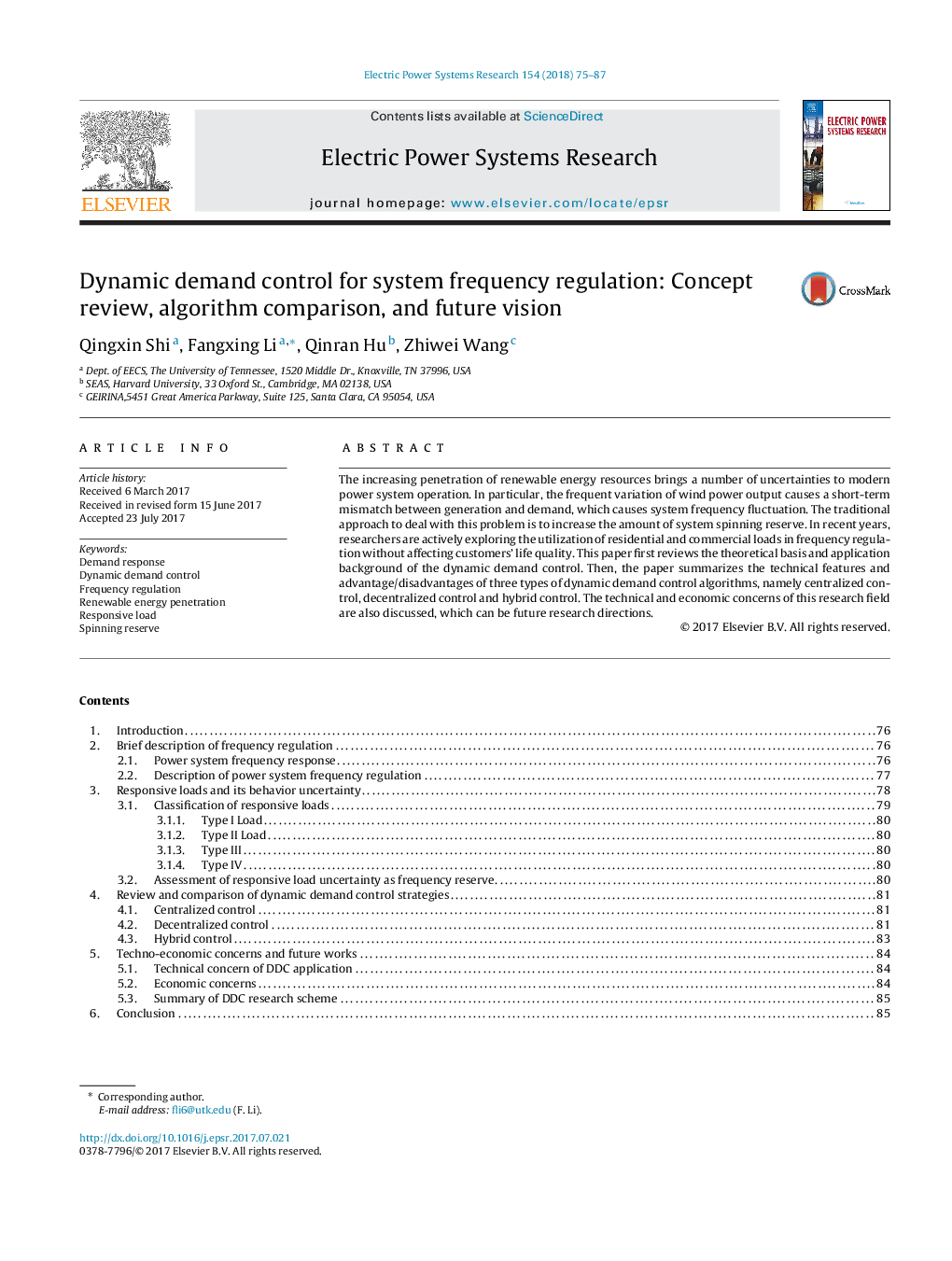| Article ID | Journal | Published Year | Pages | File Type |
|---|---|---|---|---|
| 5000921 | Electric Power Systems Research | 2018 | 13 Pages |
Abstract
The increasing penetration of renewable energy resources brings a number of uncertainties to modern power system operation. In particular, the frequent variation of wind power output causes a short-term mismatch between generation and demand, which causes system frequency fluctuation. The traditional approach to deal with this problem is to increase the amount of system spinning reserve. In recent years, researchers are actively exploring the utilization of residential and commercial loads in frequency regulation without affecting customers' life quality. This paper first reviews the theoretical basis and application background of the dynamic demand control. Then, the paper summarizes the technical features and advantage/disadvantages of three types of dynamic demand control algorithms, namely centralized control, decentralized control and hybrid control. The technical and economic concerns of this research field are also discussed, which can be future research directions.
Keywords
Related Topics
Physical Sciences and Engineering
Energy
Energy Engineering and Power Technology
Authors
Qingxin Shi, Fangxing Li, Qinran Hu, Zhiwei Wang,
